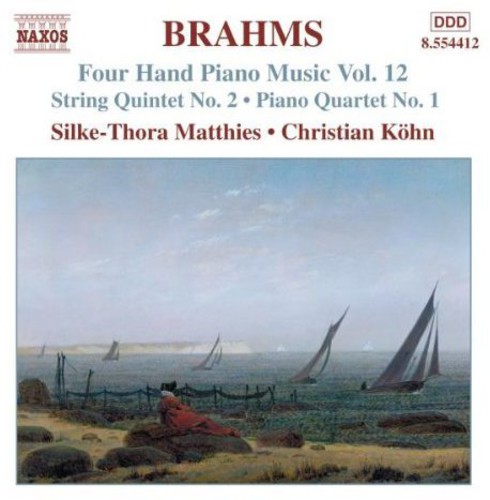Show results for
Deals
- 4K Ultra HD Sale
- 50s Films Sale
- Action Sale
- Alternative Rock Sale
- Anime sale
- Award Winners Sale
- Bear Family Sale
- Blu ray Sale
- Blues on Sale
- British Sale
- Christmas in July
- Classical Music Sale
- Comedy Music Sale
- Comedy Sale
- Country Sale
- Criterion Sale
- Drama Sale
- Electronic Music sale
- Folk Music Sale
- Horror Sci fi Sale
- Kids and Family Sale
- Metal Sale
- Music Video Sale
- Musicals on Sale
- Mystery Sale
- Naxos Label Sale
- Page to Screen Sale
- Paramount Sale
- Rap and Hip Hop Sale
- Reggae Sale
- Rock
- Rock and Pop Sale
- Rock Legends
- Soul Music Sale
- TV Sale
- Vinyl on Sale
- War Films and Westerns on Sale

Four Hand Piano Music 12
- Format: CD
- Release Date: 9/21/2004

Four Hand Piano Music 12
- Format: CD
- Release Date: 9/21/2004
- Performers: Christian Kohn, Silke-Thora Matthies
- Label: Naxos
- UPC: 636943441220
- Item #: NAX344122
- Genre: Classical
- Release Date: 9/21/2004

Product Notes
Like Mozart's, the two string quintets of Brahms are scored for two violins, two violas and cello. The choice is characteristic. The register of the violas and the richness of texture that such an instrumentation can impart, whether in chamber music or in orchestral writing, was very typical of Brahms, and reflected in his music for the piano. He had first attempted the form in 1862, using two cellos, as Schubert had done, but had destroyed it, replacing it first with an arrangement for two pianos, and later, in a final version, as a piano quintet. Brahms had intended his String Quintet in G major, Op. 111, as his last chamber music composition. He wrote it in the summer of 1890 at Bad Ischl, following his usual custom of composing during summer holidays spent away from the city. It was, in the event, to be followed by four further compositions, the Clarinet Trio, the Clarinet Quintet, and two Clarinet Sonatas, the last also known in an effectively autumnal version for viola, an instrument offered in the other works as an alternative to the clarinet. The G major Quintet was first performed in Vienna on 11th November in the year of it's composition. It starts with a movement derived from sketches for a fifth symphony, allowing the cello an orchestrally conceived first subject. For the second subject Brahms turns to Vienna for inspiration. There is a shift to B flat major in the central development, further modulation leading to the return of the original key and thematic material in recapitulation. The D minor slow movement allows free variations on the opening material, until the theme returns in a simpler form, originally played by the first viola. The third movement opens in a melancholy G minor, the feeling dispelled by a G major trio section, which has the last word, after the re-appearance of the G minor material. The quintet ends with a Vivace ma non troppo presto, a rondo that finds a place for much else that is thoroughly Austrian or Austro-Hungarian in mood, ending in an energetic Hungarian czárdás.

